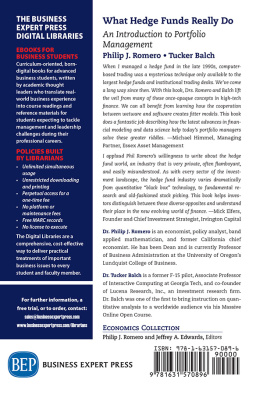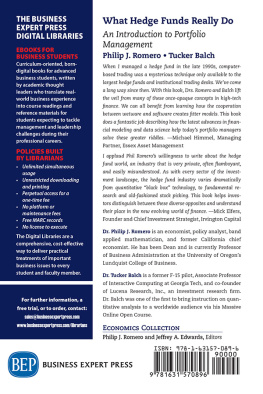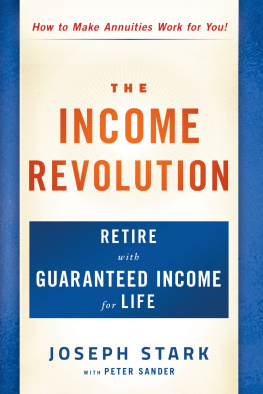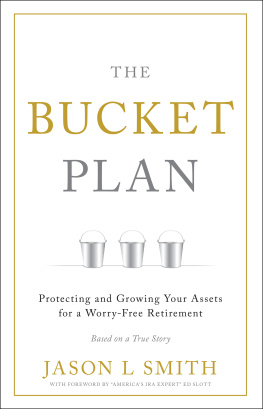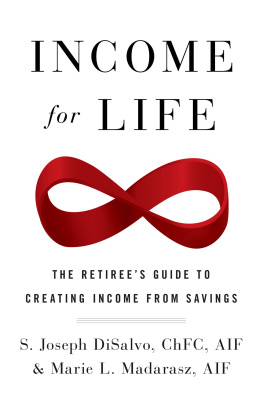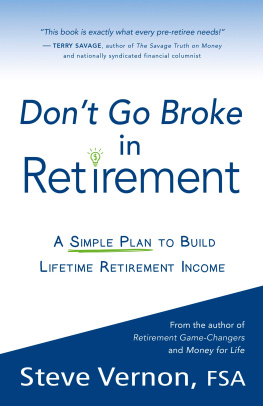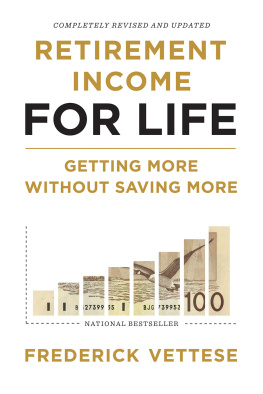Philip J. Romero - Its The Income, Stupid!: The 7 Secrets of a Stress-Free Retirement
Here you can read online Philip J. Romero - Its The Income, Stupid!: The 7 Secrets of a Stress-Free Retirement full text of the book (entire story) in english for free. Download pdf and epub, get meaning, cover and reviews about this ebook. year: 2017, publisher: Post Hill Press, genre: Romance novel. Description of the work, (preface) as well as reviews are available. Best literature library LitArk.com created for fans of good reading and offers a wide selection of genres:
Romance novel
Science fiction
Adventure
Detective
Science
History
Home and family
Prose
Art
Politics
Computer
Non-fiction
Religion
Business
Children
Humor
Choose a favorite category and find really read worthwhile books. Enjoy immersion in the world of imagination, feel the emotions of the characters or learn something new for yourself, make an fascinating discovery.
- Book:Its The Income, Stupid!: The 7 Secrets of a Stress-Free Retirement
- Author:
- Publisher:Post Hill Press
- Genre:
- Year:2017
- Rating:4 / 5
- Favourites:Add to favourites
- Your mark:
- 80
- 1
- 2
- 3
- 4
- 5
Its The Income, Stupid!: The 7 Secrets of a Stress-Free Retirement: summary, description and annotation
We offer to read an annotation, description, summary or preface (depends on what the author of the book "Its The Income, Stupid!: The 7 Secrets of a Stress-Free Retirement" wrote himself). If you haven't found the necessary information about the book — write in the comments, we will try to find it.
Its The Income, Stupid!: The 7 Secrets of a Stress-Free Retirement — read online for free the complete book (whole text) full work
Below is the text of the book, divided by pages. System saving the place of the last page read, allows you to conveniently read the book "Its The Income, Stupid!: The 7 Secrets of a Stress-Free Retirement" online for free, without having to search again every time where you left off. Put a bookmark, and you can go to the page where you finished reading at any time.
Font size:
Interval:
Bookmark:
A POST HILL PRESS BOOK
Published at Smashwords
Its the Income, Stupid
The 7 Secrets of a Stress-Free Retirement
2017 by Philip J. Romero and Riaan Nel
All Rights Reserved
ISBN: 978-1-68261-137-1
ISBN (eBook): 978-1-68261-138-8
No part of this book may be reproduced, stored in a retrieval system, or transmitted by any means without the written permission of the author and publisher.
Cover Design by Quincy Avilio
Interior Design and Composition by Greg Johnson/Textbook Perfect

Post Hill Press
posthillpress.com
Published in the United States of America
CHAPTER 4
The New Normal
Readers now near the end of their accumulation phase or early in decumulation had their formative investing experiences in the late 20th century. Their experience reflected the conventional wisdom summarized in Chapter 3, driven by that eras perfect storm of favorable demographics and economic trends. But the 200809 recession and the subsequent lackluster recovery revealed starkly different conditions that cast doubt on many of these premises. This chapter summarizes the new normal of the investing reality, including some changes that we hadnt accurately predicted. Three inescapable trends are driving investments in the developed world.
Debt
Governments throughout the world have spent more than the tax revenues they collect, accumulating debt that has risen to levels well above their countries GDPs. (The ratio of government debt to national GDP is a common indicator of debt burden.) When debt levels approach unaffordability, lenders shut their wallets: they stop lending. Governments then must throw spending and taxation into sudden reverse, which often can stifle a recovery or bring on a depression. Greece is only the most recent example. If the government can print the national currency (a privilege lost to countries like Greece when they joined the Euro zone), it can expand the supply of money to devalue its purchasing power, making the debt less expensive in real terms. But this comes at the cost of accelerating inflation, which can stifle investment and growth. Research by Professors Carmen Reinhart and Kenneth Rogoff suggests that the effective limit on government debt to avoid these malignant economic side effects is about 90% of GDP. Every advanced nations debt is far above this level; Greece isnt even the worst.
When lenders go on strike, governments will first respond with spending cuts and higher tax rates (or taxing things that had never been taxed). Taxpayers will shelter income by doing less of the activity being taxed, moving funds offshore to lower-tax jurisdictions, or searching for loopholes. When revenue raised falls short of projections, governments are likely to turn to monetizing the debt by expanding the money supply, which will in time bring on higher inflation.
The combination of these acts will be stagflation: slow growth coupled with high inflation. This last occurred in the U.S. in the late 1970s. Stagflation is typically bad for stocks, as it was then.
The greatest departure from our forecast has been regarding inflation. Developed world central banks have created nearly $10 trillion in new money since 2008, and inflation has not explodedin fact, many countries have barely avoided endemic de flation. So far it appears that the stagnating forces of debt have overwhelmed the forces of monetization/inflation.
Demographics
As societies prosper, birthrates drop. Urbanization brings households off the farm, where large families are an economic asset, into cities where they are a liability. Economic opportunities for women cause many to defer motherhood. A long-term measure of this trend is the total fertility ratio (TFR)the average number of children born per woman during her lifetime. Population levels are stable at TFRs near 2.0, perhaps 2.05 to compensate for infant mortality. The rich worlds TFRs fell below 2 a few decades after World War II (in Europe first, then Japan). It would be below 2 in the U.S. today but for immigration from highly fecund societies. When fewer babies are born to replace deaths, populations age and eventually shrink. There are fewer kids in schools, then fewer workers in jobs.
Younger populations must work and save to prepare for eventual retirement, while older populations mostly spend accumulated assets. Aging has a profound effect on economies, and on the prosperity of different industries. A young population will have vibrant education and construction sectors, while the strongest sectors among an older population will be health care and funeral homes.
If societies have put in place entitlement programs like retirement pensions (such as Social Security in the U.S.), those costs will rise as the number of older residents grows. Further, they will become less affordable if the number of workers who fund the entitlement system shrinks. In addition, societies, like individuals, take fewer risks and innovate less as they age. An aging population means a less dynamic economy: less invention and more resources used to support dependent populations.
Many things can change between the time of an economic forecast and its realization that often render such forecasts downright embarrassing. But a demographic forecast is surer. The number of births today provides an excellent estimate of the number of 25-year-olds a generation from now. Similarly, the number of 40-year-olds today is a solid predictor of the number of 65-year-olds 25 years hence.
A slowing birthrate has undoubtedly been an environmental boon, since slackening population growth exerts decelerating stress on the biosphere. But its handmaiden, an aging society, is not an unmixed blessing. The advanced economies felt the demographic slowdown first: Japan most severely, followed by Western Europe. Americas demographic slowdown has been muted by immigration. But for many developing countries entering the global middle class, their birthrates are also falling rapidly, and their societies are aging. Birthrates in poor vs. prosperous provinces in China (inland vs. coastal) and India (northern vs. southern) vary by a factor of three to six, with the more prosperous provinces already below replacement rates. As long as their economies continue to improve, their birthrates will decline and their populations will age. This is most visible in China, because of its longstanding one child policy (recently relaxed slightly): Chinas median age will exceed Americas by 2020. In the words of demographer Nicholas Eberstadt, China will grow old before it grows rich. The steady flow of Asian investments in American assets, especially U.S. Treasury debt, will reverse as profits must be repatriated home to pay for a growing elderly population.
Democratization
Many of the countries now advancing started with enormous handicaps from failing ideologies. The most prevalent was communism, which held sway over hundreds of millions. With the demise of many authoritarian regimes in the 1990s, their citizens exercised freedom of choice for the first time; and as Adam Smith first pointed out in 1776s The Wealth of Nations, one thing that free people choose is to trade. Democratization introduced three billion new capitalists (in economist Clyde Prestowitzs phrase) in Asia to the opportunities available by trading with the West. They will sell their labor in exchange for our technology. The trade made possible by democratization has propelled more people out of poverty in a shorter time than any event in history.
This trend of democratization and globalization has been a boon for the world, lifting billions out of poverty and filling Western stores with cheap goods. But those new capitalists will not be content with low skilled manufacturing jobs: they will climb the value ladder and increasingly compete directly with a growing span of Western industries. Even skilled middle-class professions in the West are under intense competitive pressure. This is one of the main reasons why median incomes in the U.S. have made no real progress for the past few decades.
Next pageFont size:
Interval:
Bookmark:
Similar books «Its The Income, Stupid!: The 7 Secrets of a Stress-Free Retirement»
Look at similar books to Its The Income, Stupid!: The 7 Secrets of a Stress-Free Retirement. We have selected literature similar in name and meaning in the hope of providing readers with more options to find new, interesting, not yet read works.
Discussion, reviews of the book Its The Income, Stupid!: The 7 Secrets of a Stress-Free Retirement and just readers' own opinions. Leave your comments, write what you think about the work, its meaning or the main characters. Specify what exactly you liked and what you didn't like, and why you think so.


